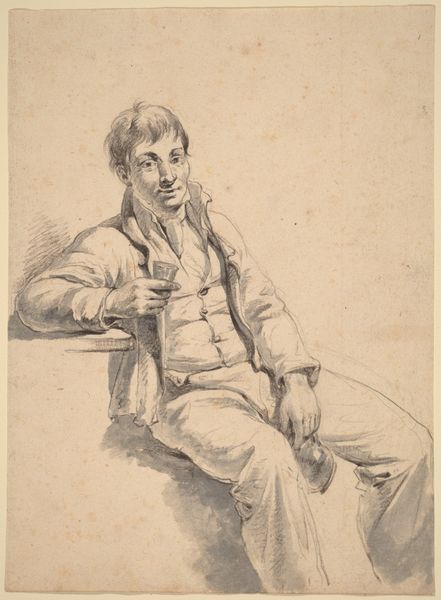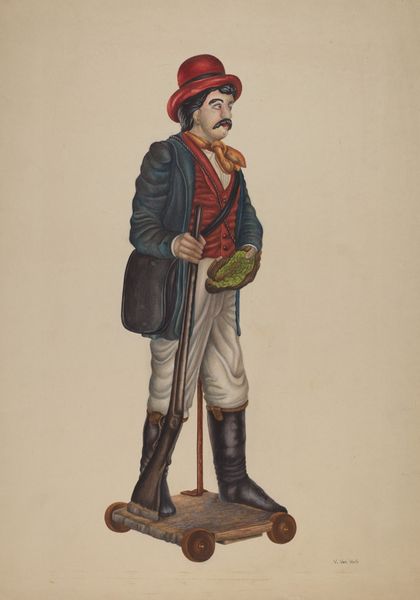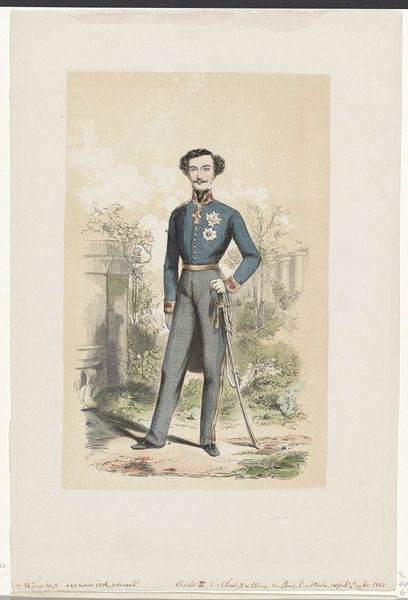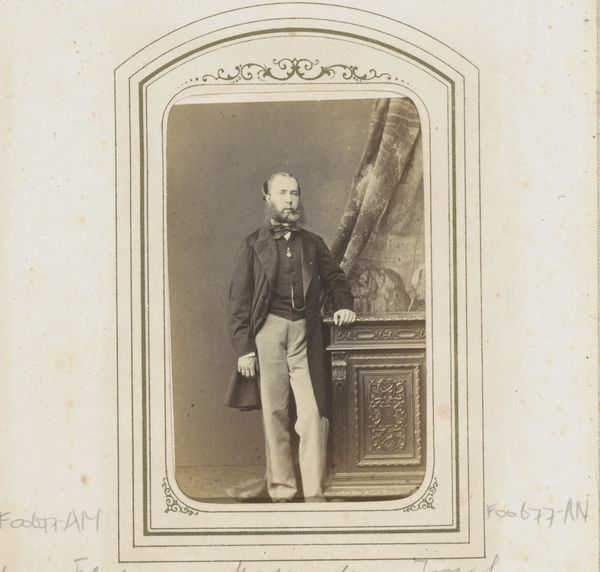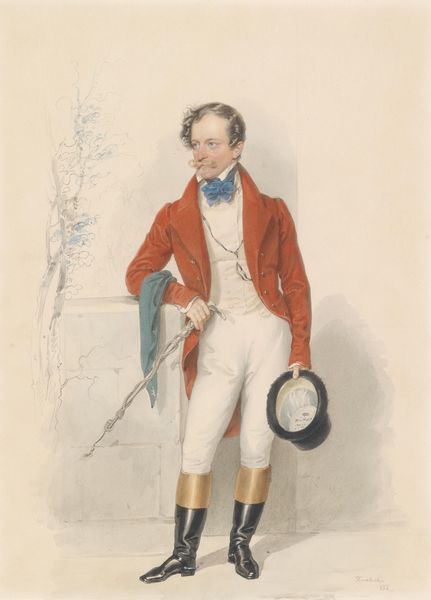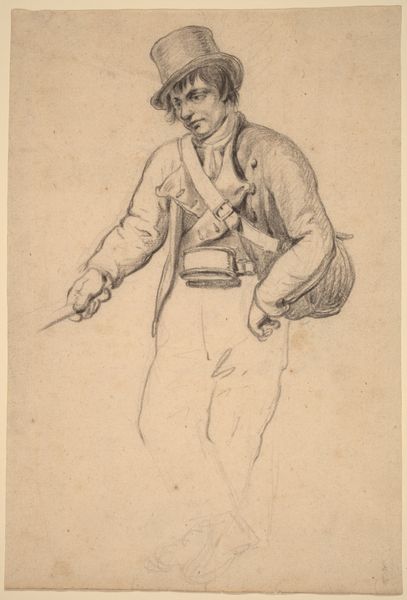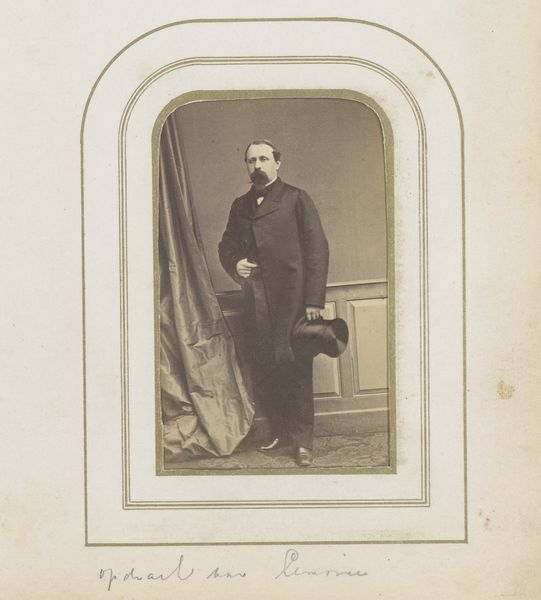
oil-paint
#
portrait
#
gouache
#
self-portrait
#
oil-paint
#
romanticism
#
genre-painting
Dimensions: 39 x 47 cm
Copyright: Public domain
Curator: Welcome. Here we have Horace Vernet's "Self-Portrait with Pipe," completed in 1835. It's an oil painting, currently housed in the Hermitage Museum in Saint Petersburg. What strikes you initially about this piece? Editor: The arrangement of forms immediately suggests an almost casual sophistication. The off-center positioning of the figure, the stark contrast between the dark coat and bright trousers, it all coalesces to create a balanced yet dynamic visual field. Curator: It is interesting how Vernet presents himself. The attire, the pipe... consider the social implications. He presents himself not just as a painter, but a certain kind of painter. Romantic, perhaps, even bohemian. This wasn’t just about painting pictures; it was about crafting an identity, advertising his studio and, of course, labor and the materials he consumes to create. Editor: Precisely. But let's also note the subtle but powerful diagonal lines established by the pipe and his leaning posture, converging at the face, leading our eye directly to the artist’s gaze. It's masterful control of composition. Even that slightly unfinished canvas propped against the wall is intentional to the Romantic sentiment; it provides an atmosphere and backdrop that isn’t about the high society and aristocracy so prevelent in society. Curator: And how does the setting of what appears to be the artist's studio play into this image of romantic artistry? The placement of the painting utensils seems almost too performative. Every item is a marker of his trade; brushes and tubes scattered, perhaps haphazardly, on a nearby chair next to his rug, but strategically within view and is another type of production by his own making. Editor: Perhaps so, yet I read it also as carefully chosen in the construction of this intimate depiction of his studio life. Note the colors, too—how the earthy tones of the background and the stove contrast and harmonize with the whites of his clothes and the brighter reds of his belt and rug and draws the attention toward the seated man’s silhouette. Curator: So, while on the surface, we're presented with this image of a carefree artist in his studio, puffing his pipe... what’s underneath is this intersection of self-representation and a commentary of an era and emerging artistic expectations. Editor: Ultimately, I come away with a deeper appreciation for how Vernet leverages his composition and visual language to speak of a larger-than-life character. Curator: I agree. It has left me with a sense of not just Vernet, but also with all artists' struggle of selling both the art and the lifestyle together in tandem.
Comments
No comments
Be the first to comment and join the conversation on the ultimate creative platform.
